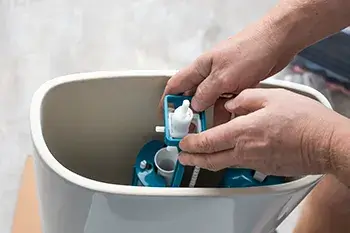Installing a toilet may seem like a basic task, but it comes with its share of potential pitfalls. For Virginia homeowners, understanding these challenges can save unnecessary costs and future issues. Let’s explore common mistakes during toilet installation and offer insights into avoiding them.
The Importance of Accurate Measurements
Proper measurements form the foundation of a successful toilet installation. It’s not just about ensuring the toilet fits; it’s about optimizing space and functionality. Always measure the ‘rough-in’ distance, which is the gap between the wall and the center of the floor drain. Especially in older Virginia homes, this distance might vary from the standard 12 inches, demanding a specific toilet model.
The Wax Ring: Small but Essential
The wax ring might seem insignificant, but it plays a pivotal role. It ensures a watertight seal between the toilet and the floor, preventing leaks. Always use a new, high-quality wax ring during installation. Over time, these rings can degrade, so investing in a good one offers long-term peace of mind.
Leveling: Ensuring Stability and Functionality
A toilet that isn’t level can lead to myriad issues. It affects the aesthetics, stability, and even the flushing efficiency. Using a level is crucial, but also consider the floor’s slope and adjust accordingly. Small plastic shims can help achieve a perfect level.
Bolts: The Tightness Dilemma
Securing the toilet is vital, but there’s a fine line between tight and too tight. Over-tightening can crack the porcelain, leading to costly replacements. It’s essential to be cautious and feel the resistance while tightening. If in doubt, stop and reassess.
Post-Installation Checks
After installation, rigorous testing is paramount. Look for leaks, test flush efficiency, and check the overall stability. Early detection of issues can save a lot of time and money in the long run.
Adhering to Local Building Codes
Each region, including Virginia, has specific building codes. These codes encompass various aspects, including water usage, installation depth, and more. Being compliant not only ensures a successful installation but also avoids legal complications.
When to Call in the Experts
There’s no harm in acknowledging when professional help is required. If any step seems overwhelming or if there’s uncertainty, it’s wise to consult with or hire professionals. Their expertise can help navigate the complexities and ensure a seamless installation.
Component Compatibility
It’s tempting to mix and match toilet components, especially when trying to save costs. However, using mismatched or incompatible parts can compromise the toilet’s functionality. Ensure all components are compatible and, if possible, from the same brand or recommended series.
Overlooking Bathroom Ventilation
Ventilation is often an overlooked aspect during toilet installations. Adequate ventilation prevents moisture buildup, safeguarding against mold, mildew, and wood rot. Before installing a new toilet, assess the bathroom’s ventilation and make necessary improvements.
Conclusion
Armed with this knowledge, Virginia homeowners can approach toilet installation with increased confidence. Avoiding these common pitfalls ensures a successful, long-lasting installation. And always remember, professional services like ToiletKingVA are available to guide you through every step, ensuring perfection in every detail.

